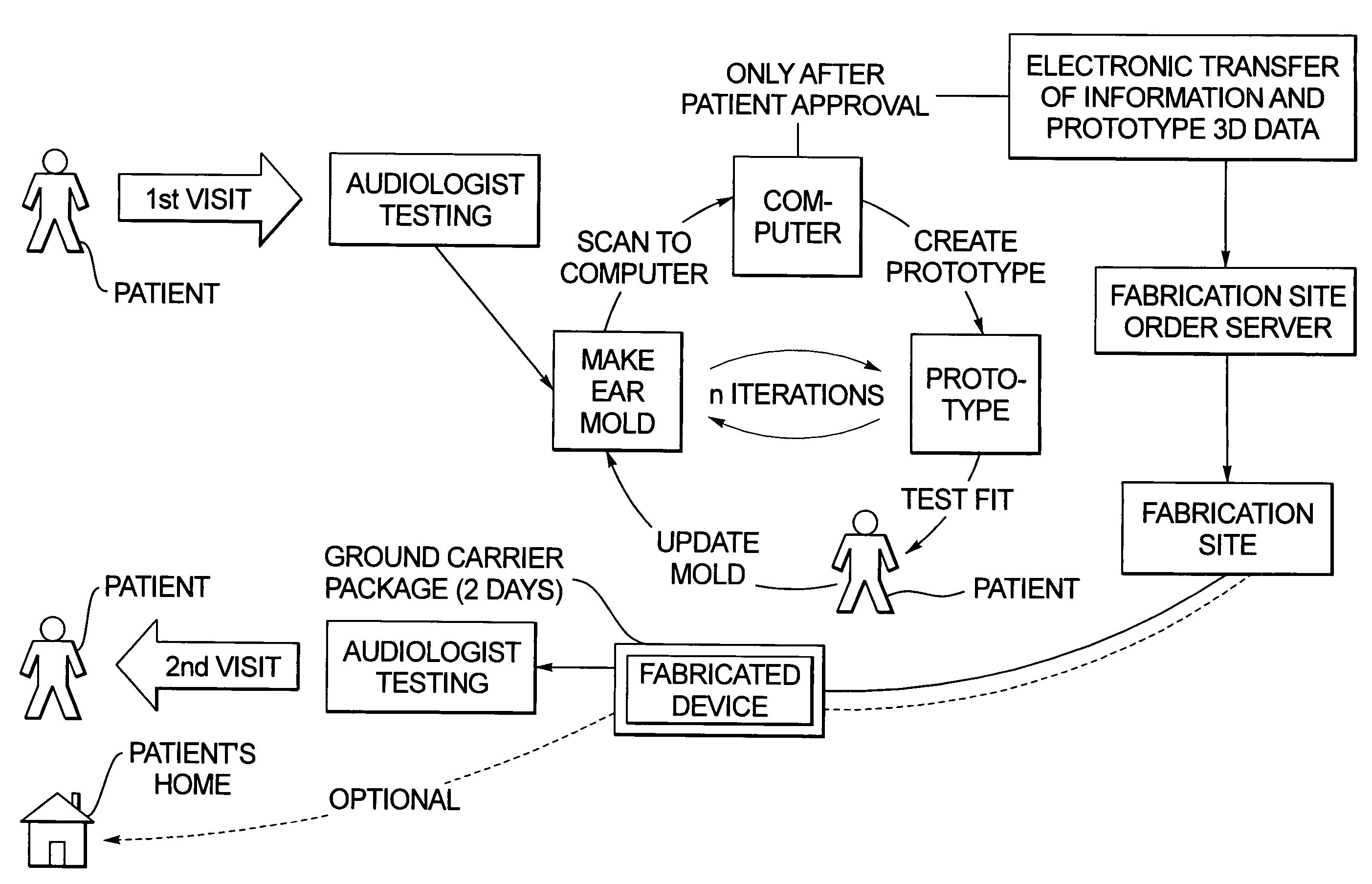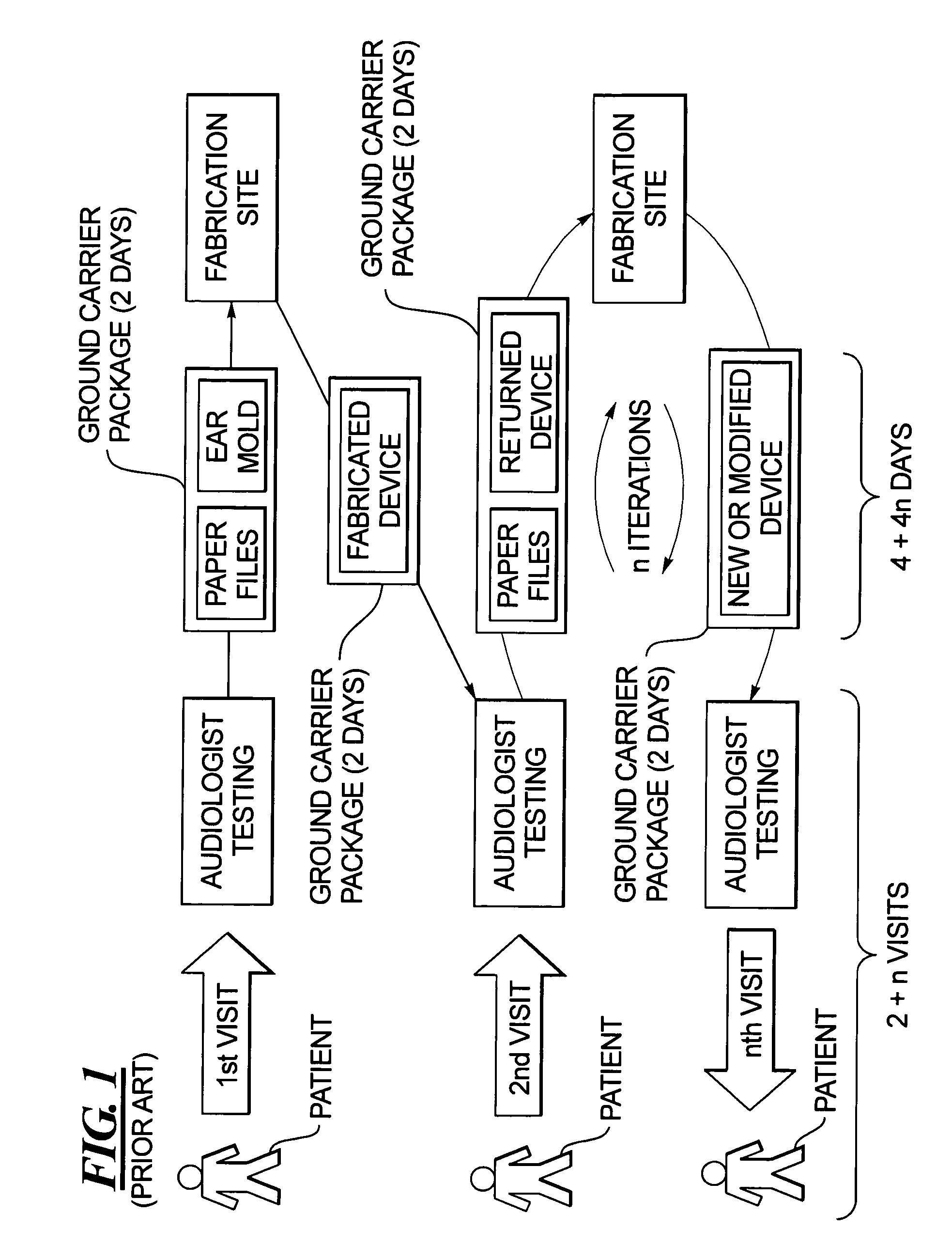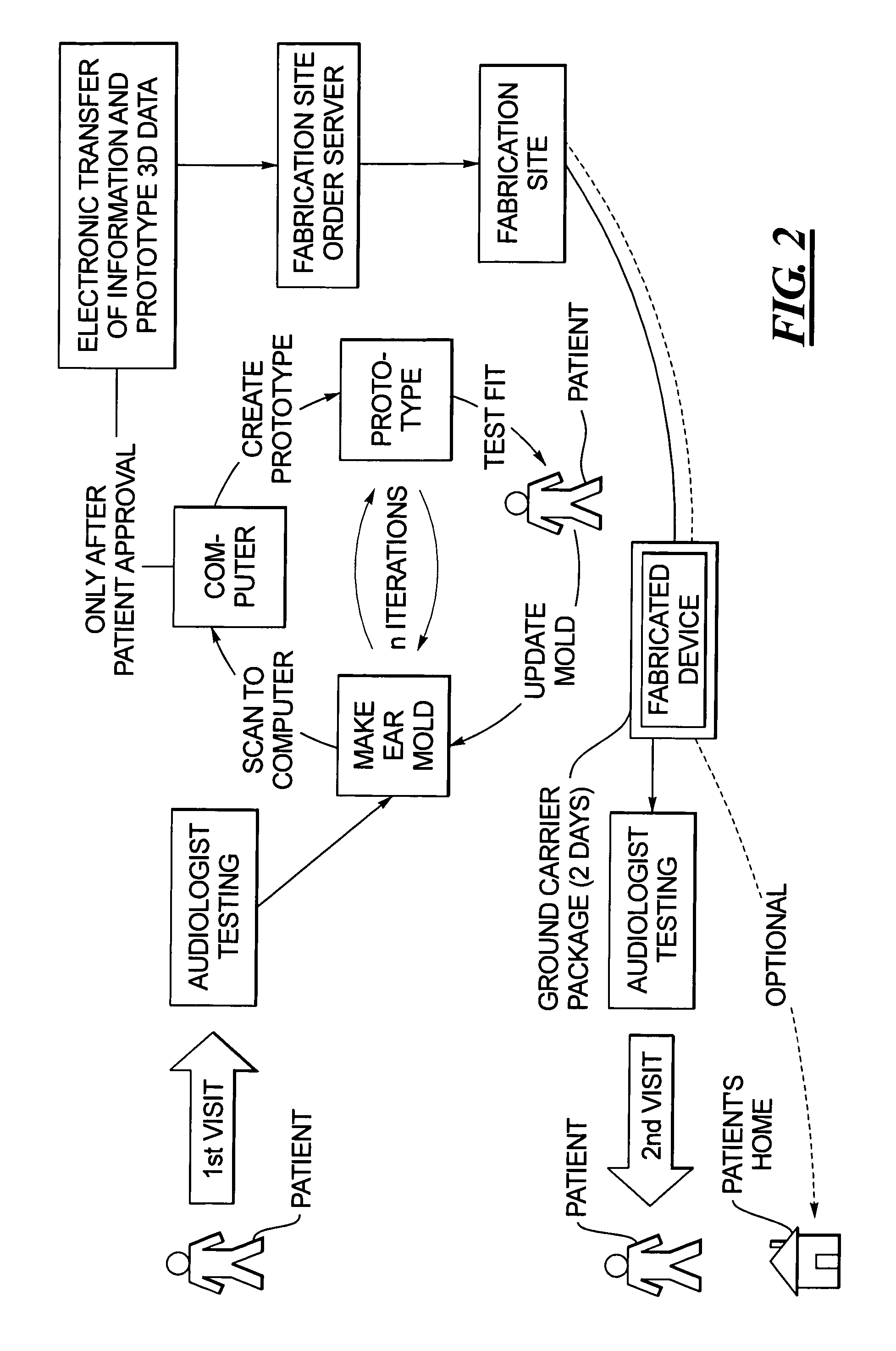Method for fabricating a hearing aid shell and mold incorporating test fitting by the user
a hearing aid and mold technology, applied in the field of hearing aid shells and molds, can solve the problems of long patient care cycles, patients' inability to determine exactly how the hearing aid will feel in the patient's own ear, and patients' rejection of hearing aid devices
- Summary
- Abstract
- Description
- Claims
- Application Information
AI Technical Summary
Benefits of technology
Problems solved by technology
Method used
Image
Examples
Embodiment Construction
[0017]As schematically illustrated in FIG. 2, the procedure for fabricating a hearing aid device in accordance with the present invention begins with a patient visit to an audiologist at a dispenser location, wherein a conventional hearing exam takes place to determine hearing aid settings and programs for the electronic components that will be embodied in a hearing aid to correct the particular hearing impairment of the patient. Also in this visit, an ear mold of the patient is made using quick hardening foam.
[0018]In accordance with the present invention, this mold is then scanned at the location of the audiologist, in order to generate a three-dimensionally electronic data set that represents the shape of the ear canal of the patient. The shape is modified (trimmed, elongated, reduced, built-up, etc.) by a process known as “detailing.” This is a computerized process that includes algorithms to support automation of these steps. The algorithm, or another algorithm, also automatica...
PUM
| Property | Measurement | Unit |
|---|---|---|
| size | aaaaa | aaaaa |
| sound transmission | aaaaa | aaaaa |
| frequency | aaaaa | aaaaa |
Abstract
Description
Claims
Application Information
 Login to View More
Login to View More - R&D
- Intellectual Property
- Life Sciences
- Materials
- Tech Scout
- Unparalleled Data Quality
- Higher Quality Content
- 60% Fewer Hallucinations
Browse by: Latest US Patents, China's latest patents, Technical Efficacy Thesaurus, Application Domain, Technology Topic, Popular Technical Reports.
© 2025 PatSnap. All rights reserved.Legal|Privacy policy|Modern Slavery Act Transparency Statement|Sitemap|About US| Contact US: help@patsnap.com



